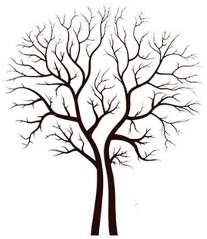The fiesta of Los Momotxorros in Altsasua, Navarra, is one of the highlights of my year. This for me is real carnival. A fiesta whose origins go back to Pagan times, it marks a turning point in the winter and the coming of Spring. It’s a fiesta where our demons are paraded before us, named, laughed at and driven away.
There are several characters who protagonise this fiesta. The Momotxorros make up the largest group and I would estimate that there were several hundred at last nights event. Arriving in Altsasua the first character I encountered was the bumbling and outlandishly oversized Txiripotz.
The pageant began at the local school where the Momotxorros had been corralled behind bars. The tension mounted as the minutes passed and we waited for the clock to strike 7.30.
Then on the signal of a rocket a roar went up, the gate slid back and they spilled forth. There’s no room for reserve here you are literally born along on a tide of woolly beasts.
Yes, it’s scary but the atmosphere is fundamentally friendly. Folks look out for each other and no harm comes. People drink and get a bit “foo” but this is not the drunken affair that it would be in other countries.
I’ve seen wary looks on the faces of children and adults alike but this is about confronting fears and affirming that when we all join together there’s not much to be afraid of really.
More photos here

 The Momotxorros are the most important figures in the pageant. They make their way as a herd through the streets of Altsasua accompanied by marching bands. They dance the Momotxorro dance and make an unbelievable, unholy even, amount of noise with the cencerros (cow bells) they carry with them.
The Momotxorros are the most important figures in the pageant. They make their way as a herd through the streets of Altsasua accompanied by marching bands. They dance the Momotxorro dance and make an unbelievable, unholy even, amount of noise with the cencerros (cow bells) they carry with them.
 There is also a goat character who to an extent is master of ceremonies. He is known as Akerra in Euskera or El Cabrón in Spanish. His resemblance to Pan and other horned figures is obvious. He travels in a wooden chariot bedecked with animal skins and skulls. At intervals along the way he descends into the crowd and mounts anyone and anything that should cross his path.
There is also a goat character who to an extent is master of ceremonies. He is known as Akerra in Euskera or El Cabrón in Spanish. His resemblance to Pan and other horned figures is obvious. He travels in a wooden chariot bedecked with animal skins and skulls. At intervals along the way he descends into the crowd and mounts anyone and anything that should cross his path.
More photos here
There are numerous witch covens too. These ones had their own portable cauldron.
There are devils in various forms at this event and I met mine along the way. We struggled for some time before I was able to drive him off.
The procession makes its way all around town driving out the evil spirits as it goes. Finally it arrives in La Plaza where they dance counter clockwise (of course) around the band stand.
At one point I encountered a group of Txiripotz strewn around a room and pleading to be released from their costumes. Although the night was cold (-4ºC) they were expiring in the claustrophobic heat of their suits.
There is something earthy and honest about this festival. The costumes are really very simple and made entirely of things that can be found in a rural context. There are groups of people who are dressed in cabbages. I asked one of my friends what that was all about expecting some sort of anthropological artefact by way of explanation. “Uh? I don’t know, I guess it’s just that there are only cabbages in the garden at this time of year”, was the reply I got. And in a way that sums it up. This is not a commercial event and the best costumes are not the ones that cost the most.
You can see something of the event in these short videos. For more photos click here.
[youtube]http://www.youtube.com/watch?v=KbJ8pnipnlQ&feature=plcp&context=C35144e8UDOEgsToPDskINDICA0doBTuNQdRHjDVUm[/youtube]
[youtube]http://youtu.be/-__NT0gDvDI[/youtube]
[youtube]http://www.youtube.com/watch?v=8CaaPazsv3Q[/youtube]









